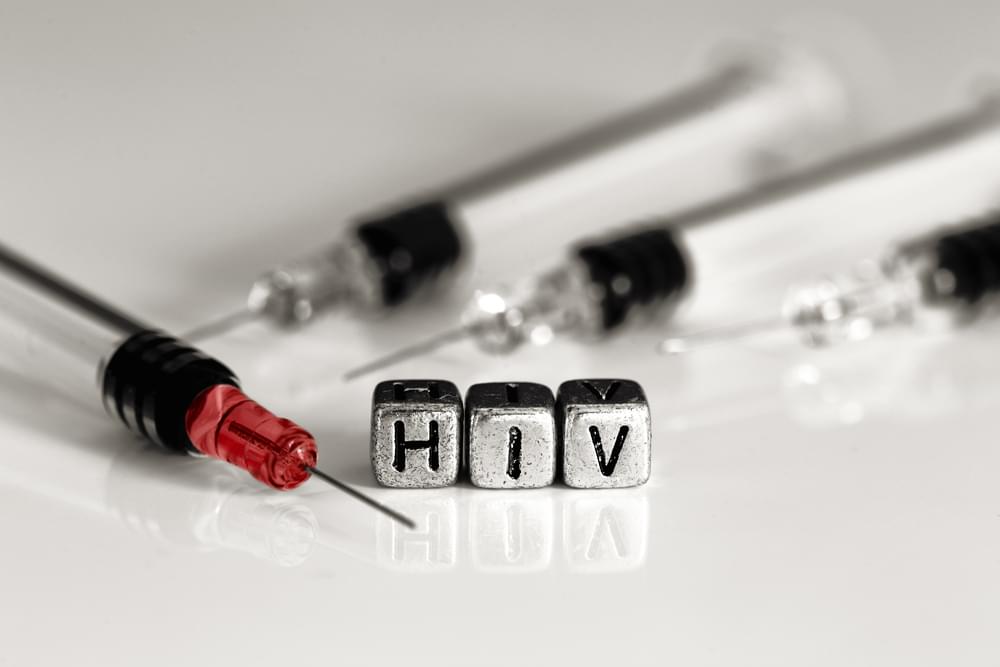Wyszukaj w publikacjach
Pacjent z HIV i nowotworem: czy potrzebne są osobne wytyczne?

W ostatnich latach obserwuje się wśród osób HIV-dodatnich wzrost zachorowań na nowotwory niecharakterystyczne dla AIDS. Zakażenie wirusem HIV przez długie lata stanowiło jednak kryterium dyskwalifikujące z uczestnictwa w badaniach klinicznych. Choć powoli zaczyna się to zmieniać, to badań z udziałem uczestników z wymienioną infekcją wciąż jest niezbyt dużo. Coraz większa jest natomiast szansa, że pacjent HIV-dodatni w gabinecie onkologa znajdzie się nie z powodu nowotworu klasycznie kojarzonego z ludzkim wirusem niedoboru odporności, ale na przykład raka płuca. Rodzi się więc pytanie: czy pacjenci tacy wymagają odrębnego postępowania leczniczego lub diagnostycznego?
Niestandardowy przypadek i… standardowe leczenie?
Część doniesień sugeruje, że ryzyko wystąpienia toksyczności u pacjentów HIV-dodatnich poddanych leczeniu cytotoksycznemu jest większe niż w populacji ogólnej. Efekt ten wydaje się związany z interakcjami między chemioterapeutykami a lekami antyretrowirusowymi. Zaobserwowano to w przypadku między innymi raka płuca [1,2], piersi [3], a także raka odbytu [4,5]. Z tego powodu wytyczne amerykańskiego NCCN (National Comprehensive Cancer Network) zalecają stosowanie w tym ostatnim rozpoznaniu radioterapii z modulacją intensywności wiązki (IMRT) [6]. W przypadku innego nowotworu związanego z infekcją HPV, a mianowicie płaskonabłonkowego raka ustnej części gardła, wydaje się, że czas przeżycia całkowitego wśród pacjentów seropozytywnych jest krótszy niż w populacji ogólnej [7]. Badania nad tolerancją leczenia są natomiast jeszcze w toku. Co zatem z immunoterapią? Wstępne dane pozwalają sądzić, że jest ona raczej bezpieczna [8]. NCCN przestrzega jednakże przed użyciem jej w przypadku zakażenia wirusem odpowiedzialnym za mięsaka Kaposiego (KSHV), gdyż może to prowadzić do wystąpienia zespołów zapalnych [6]. Jak podają autorzy opublikowanego w The Lancet przeglądu „The effect of non-AIDS-defining cancers on people living with HIV”, według obecnego konsensusu w większości przypadków osoby HIV-dodatnie o wysokim poziomie sprawności powinny otrzymywać leczenie przeciwnowotworowe zgodne z wytycznymi dla populacji ogólnej. Podkreśla się przy tym wagę ścisłej współpracy między onkologami, specjalistami chorób zakaźnych oraz farmaceutami.
Diagnostyka nowotworów u pacjentów HIV-pozytywnych
Czy zwiększone ryzyko zachorowania na niektóre nowotwory znajduje odzwierciedlenie w postępowaniu diagnostycznym, w tym badaniach przesiewowych? Jak podaje publikacja, obecne (bardzo ograniczone) dane wskazują, że pacjenci HIV-dodatni powinni być poddawani badaniom przesiewowym w kierunku raka płuca za pomocą niskodawkowej tomografii komputerowej zgodnie z wytycznymi dla populacji ogólnej [9,10]. Wykazano natomiast, że śmiertelność związana z rakiem wątrobowokomórkowym jest u osób zakażonych o 24% wyższa niż u seronegatywnych [11]. W związku z tym sugeruje się, aby osoby żyjące z wirusem HIV i marskością wątroby szczególnie zachęcać do udziału w programach nadzoru onkologicznego. Jak podaje publikacja, NYS DOH AI (New York State Department of Health AIDS Institute) rekomenduje u pacjentów HIV-pozytywnych również coroczne badanie cytologiczne kanału odbytu z następczą anoskopią wysokiej rozdzielczości w przypadku nieprawidłowego wyniku badania przesiewowego [12].
Skuteczna terapia antyretrowirusowa pozwalająca pacjentom na osiąganie zaawansowanego wieku, w którym zapadają na bardziej typowe dla niego choroby, większe niż w populacji ogólnej narażenie na dym tytoniowy czy modyfikowany przez niedobór odporności przebieg infekcji wirusami onkogennymi - to tylko jedne z czynników, które powodują, że w populacji osób HIV-dodatnich coraz częściej mamy do czynienia z bardziej „powszechnymi” nowotworami. Więcej uwagi poświęca się więc kwestii ewentualnych modyfikacji terapii przeciwnowotworowej w tej grupie chorych, czego odzwierciedleniem jest wzrost liczby prowadzonych na ten temat badań. Ich listę wraz z krótką charakterystyką oraz dalsze informacje na ten temat znajdziecie w artykule pt. „The effect of non-AIDS-defining cancers on people living with HIV” (Lancet, czerwiec 2021).
Źródła
- Makinson A, Tenon JC, Eymard-Duvernay S et al. Human immunodeficiency virus infection and non-small cell lung cancer: survival and toxicity of antineoplastic chemotherapy in a cohort study. J Thorac Oncol. 2011 Jun;6(6):1022-9.
- Lavole A, Greillier L, Mazières J et al; French Cooperative Thoracic Intergroup (IFCT). First-line carboplatin plus pemetrexed with pemetrexed maintenance in HIV-positive patients with advanced non-squamous non-small cell lung cancer: the phase II IFCT-1001 CHIVA trial. Eur Respir J. 2020 Aug 27;56(2):1902066.
- Parameswaran L, Taur Y, Shah MK et al. Tolerability of chemotherapy in HIV-infected women with breast cancer: are there prognostic implications? AIDS Patient Care STDS. 2014 Jul;28(7):358-64. Epub 2014 May 19.
- Bryant AK, Huynh-Le MP, Simpson DR et al. Association of HIV Status With Outcomes of Anal Squamous Cell Carcinoma in the Era of Highly Active Antiretroviral Therapy. JAMA Oncol. 2018 Jan 1;4(1):120-122
- Sparano JA, Lee JY, Palefsky J et al. Cetuximab Plus Chemoradiotherapy for HIV-Associated Anal Carcinoma: A Phase II AIDS Malignancy Consortium Trial. J Clin Oncol. 2017 Mar;35(7):727-733. Epub 2016 Dec 12.
- Reid E, Suneja G, Ambinder RF et al. Cancer in People Living With HIV, Version 1.2018, NCCN Clinical Practice Guidelines in Oncology. J Natl Compr Canc Netw. 2018 Aug;16(8):986-1017.
- Mazul AL, Hartman C, Kramer J et al. Incidence and survival for oropharynx and non-oropharynx head and neck cancers among veterans living with HIV. Cancer Med. 2020 Dec;9(24):9326-9335.
- Gonzalez-Cao M, Morán T, Dalmau J et al. Assessment of the Feasibility and Safety of Durvalumab for Treatment of Solid Tumors in Patients With HIV-1 Infection: The Phase 2 DURVAST Study. JAMA Oncol. 2020 Jul 1;6(7):1063-1067.
- Kong CY, Sigel K, Criss SD et al. Benefits and harms of lung cancer screening in HIV-infected individuals with CD4+ cell count at least 500 cells/μl. AIDS. 2018 Jun 19;32(10):1333-1342.
- Makinson A, Eymard-Duvernay S, Raffi F et al; ANRS EP48 HIV CHEST study Team. Feasibility and efficacy of early lung cancer diagnosis with chest computed tomography in HIV-infected smokers. AIDS. 2016 Feb 20;30(4):573-82.
- Pinato DJ, Allara E, Chen TY et al; Liver Cancer in HIV and ITA.LI.CA Study Groups. Influence of HIV Infection on the Natural History of Hepatocellular Carcinoma: Results From a Global Multicohort Study. J Clin Oncol. 2019 Feb 1;37(4):296-304.
- New York State Department of Health AIDS Institute. Screening for anal dysplasia and cancer in patients with HIV. March, 2020. https://www.hivguidelines.org/hiv-care/anal-dysplasia-cancer (accessed Jan 9, 2021).






